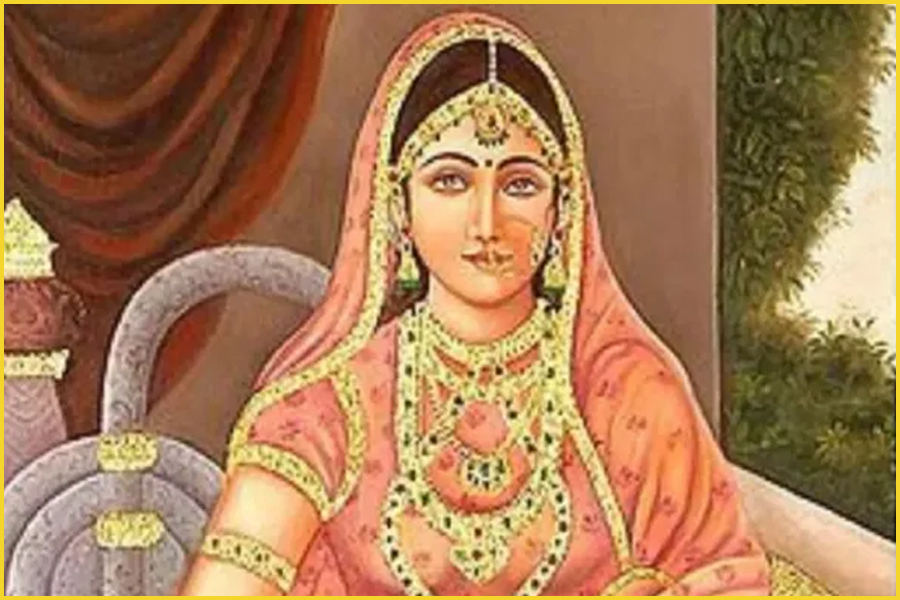Rani Karnavati, the valiant queen of Mewar, is remembered for her courage, diplomacy, and sacrifice during a turbulent period in Indian history. Known for her legendary act of sending a rakhi to Mughal emperor Humayun, she symbolizes the spirit of honor and protection. Her story is deeply rooted in Rajput valor and the cultural ethos of Rajasthan. Rani Karnavati’s leadership during the siege of Chittorgarh and her role in preserving the dignity of her kingdom have made her an iconic figure in Indian folklore. This article explores her life, legacy, and historical significance in eight comprehensive points.
Who Was Rani Karnavati?
Rani Karnavati was the widowed queen of Chittorgarh, a prominent fort city in the Mewar region of Rajasthan. She belonged to the Sisodia Rajput dynasty and was the wife of Rana Sanga, a legendary warrior king. After his death, she assumed regency for her young son, Vikramaditya. Despite being a woman in a patriarchal society, she took charge of the kingdom’s affairs with remarkable strength and wisdom. Her rule was marked by political challenges, especially from Bahadur Shah of Gujarat. Rani Karnavati’s leadership during this period is a testament to her resilience and strategic acumen.
The Siege of Chittorgarh
In 1534, Bahadur Shah of Gujarat launched an attack on Chittorgarh, aiming to capture the fort and expand his territory. Rani Karnavati, faced with limited military resources and internal dissent, chose to defend the fort with all her might. She mobilized the Rajput warriors and prepared for battle. Despite her efforts, the siege intensified, and defeat seemed inevitable. In a final act of defiance and honor, she performed Jauhar—self-immolation along with hundreds of women-to protect their dignity from the invading forces. This event is one of the most poignant moments in Rajput history.
The Rakhi to Humayun
One of the most iconic episodes in Rani Karnavati’s life was her decision to send a rakhi to Mughal emperor Humayun. Facing an imminent threat from Bahadur Shah, she sought help from Humayun by invoking the symbolic bond of brotherhood through the rakhi. Though Humayun was touched by the gesture and began his march toward Chittorgarh, he arrived too late. The rakhi episode has since become a legendary tale of diplomacy, emotional appeal, and cultural symbolism, often cited during Raksha Bandhan celebrations as a historical example of protection and honor.
The Act of Jauhar
Jauhar was a Rajput tradition where women self-immolated to avoid capture and dishonor during enemy invasions. Rani Karnavati’s Jauhar is one of the most remembered in Indian history. As Bahadur Shah’s forces breached Chittorgarh’s defenses, she led hundreds of women into the fire, choosing death over dishonor. This act was not just a sacrifice but a powerful statement of resistance and dignity. It highlighted the Rajput code of honor and the extreme measures taken to preserve it. Rani Karnavati’s Jauhar remains a symbol of courage and cultural pride.
Legacy in Rajput History
Rani Karnavati’s legacy is deeply embedded in Rajput history and folklore. She is celebrated as a symbol of bravery, sacrifice, and leadership. Her story is taught in schools, depicted in literature, and remembered in cultural festivals across Rajasthan. The tale of her rakhi to Humayun and her ultimate sacrifice during the siege of Chittorgarh continue to inspire generations. Statues, memorials, and historical accounts honor her contribution to Mewar’s heritage. Her life serves as a reminder of the strength and resilience of women in Indian history.
Cultural Significance
Rani Karnavati’s story transcends history and holds immense cultural significance. Her rakhi gesture is often cited as the origin of Raksha Bandhan’s emotional depth. In Rajasthan, she is revered not just as a queen but as a mother figure who protected her people. Her tale is part of folk songs, ballads, and traditional storytelling. The Jauhar performed by her and other Rajput women is commemorated in annual rituals and historical reenactments. Her life reflects the values of honor, loyalty, and sacrifice that are central to Rajput identity.
Historical Debates and Interpretations
While Rani Karnavati’s rakhi to Humayun is widely celebrated, some historians debate its authenticity, citing lack of contemporary records. However, the story has gained legendary status over time, becoming a part of India’s cultural memory. Scholars argue that even if the rakhi episode is symbolic, it reflects the diplomatic strategies employed by Rajput rulers. The Jauhar, too, is interpreted both as a tragic loss and a heroic act. These debates enrich the understanding of her life and highlight the complexities of historical narratives.
Rani Karnavati in Modern Media
Rani Karnavati’s story has been portrayed in books, television shows, and documentaries. Her character often appears in historical dramas and folklore-based narratives. Modern interpretations focus on her strength as a female leader and her emotional intelligence in seeking help through the rakhi. She is seen as a feminist icon in some circles, representing women’s agency in medieval India. Her legacy continues to inspire writers, filmmakers, and historians who seek to highlight powerful women from India’s past. Rani Karnavati remains a timeless figure of courage and conviction.
ALSO READ-How Deforestation Fuels the Risk of Pandemics Like COVID-19
Disclaimer: The articles, videos, and news published and shared on Theconnect24.com covering topics such as religion, astrology, health, yoga, history, mythology, and others are intended solely for general informational purposes. These materials are sourced from various references, and Theconnect24.com does not guarantee or verify their accuracy, completeness, or authenticity. Viewers are strongly advised to seek guidance from qualified experts or specialists before practicing, following, or experimenting with any information related to astrology, health, or similar subjects. This content is presented purely for the interest of viewers and does not carry any scientific validation or evidence.



